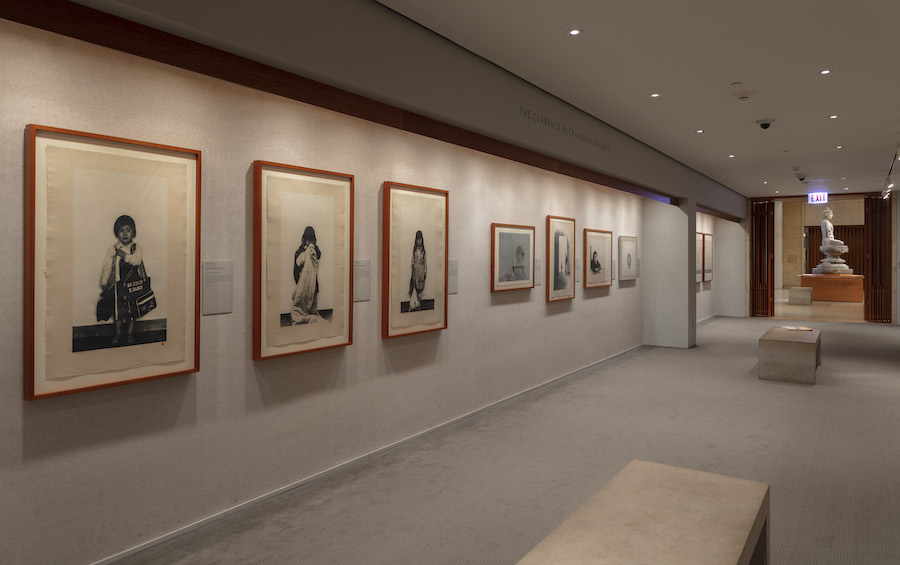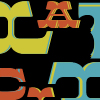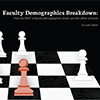...we see a similar, stark disparity. Arguably, Tetsuya is a significantly less prominent artist in the widely known canon. But who decided that? History is often written by those in power, and it is no coincidence that the ruling canon is predominantly white. A museum that endeavours to provide similar attention and coverage to lesser-known artists and underserved communities can help the canon evolve.
Installation images of Noda Tetsuya: My Life in Print, 2020. Images courtesy of the Art Institute of Chicago.
Moreover, a quick look at how the Art Institute has structurally organized itself is also very telling. Some of the Art Institute's galleries include “American Art before 1900,” “Modern American Art 1900-1950,” “Medieval and Renaissance Art,” and “European Art before 1900." Artworks from the United States and Europe are chronologically segmented to differentiate between and show progress from one era to the next. When it comes to Asia, however, there are only three galleries: (1) “Indian, Southeast Asian, and Himalayan Art,” (2) “Chinese, Japanese, and Korean Art,” and (3) “Islamic Art.”
For the most culturally diverse continent in the world, there being only a mere three galleries is appalling. More importantly, however, it is not clearly indicated to the public that the works in these three galleries are mostly limited to work from before the 20th century, and do not reflect the region’s art of today. Such negligence and remissness in labeling entrenches the misconception that “Asian art” is “exotic” and “primitive.” The same can be said for Africa and Latin America. The entire African continent is collapsed under just one gallery labelled “Arts of Africa,” and there isn’t even a gallery dedicated fully to Latin American art; it’s subsumed under “Arts of the Americas,” which comprises art from North, Central, and South America.
Even within the American and European collections, representation is lacking. As the Art Institute shifted online to adapt to the COVID-19 pandemic, it has updated its website for online visitation. In the “Artists” section, where 10 notable artists are highlighted, only 2 artists listed are Black: Mikki Ferrill and Charles White. 10 may seem like a small sample size, but given that only 8% of the contemporary art collection consists of non-white artists within the West, this is reflective of the larger collection at the Art Institute.
At a grassroots level, this skewed, culturally limited narrative that the Art Institute presents has detrimental impacts on art education and youths. Kyle Johanson, a former Special Projects Museum Educator, who had been tasked with working directly with schools in the Chicago Public Schools (CPS) district, experienced numerous struggles when he in creating teaching resources. He told me over a Zoom call that “the artifacts we had to work with were teaching a narrative [...] that was actually quite violent.” The artifacts themselves were suggesting to many of the CPS students, he said, that “their cultures no longer exist, or are relegated to a very specific lens through which they are seen.” In Chicago, the majority of children are enrolled in CPS schools, which rely on collaborations with the Art Institute to engage with fine art. The Art Institute’s collection thus becomes their first point of contact with art museums, influencing their perceptions of which cultures matter, who matters, and, ultimately, how much they matter. This has repercussions on the way they internalize their sense of self-worth and situate themselves in the society they live in.
The artifacts suggested that “their cultures no longer exist, or are relegated to a very specific lens through which they are seen.”
From personal experience, as a Singaporean of Chinese descent, the domination of white artists perpetuated by museums like the AIC indoctrinated in me a misplaced reverence for white, Western art. Growing up, I mistakenly saw it as an ideal that I should aspire to. The deep-rooted, overwhelming whiteness at the Art Institute only reinforces such misbeliefs. As non-white individuals, we are thus given limited opportunities to see how we can internalize or externalize our own narratives and experiences, and often even come to reject or disparage our own cultures as a result.
What is so troubling to me is that the Art Institute claims to represent the entire world, when it doesn’t really. It promises to represent non-white individuals from across the globe, but when it fails me, just as it does for many of you, it fails its mission entirely. As an institution of tremendous influence and authority, I believe the Art Institute shoulders the inescapable responsibility of championing fair, equal and accurate representation.
Major restructuring is in order, such as recategorizing the galleries, changing the way they are labelled, and creating a dedicated team to bring in more contemporary artworks beyond the white, Western narrative. Especially amidst the recent layoff of 51 employees and museum staff members’ open letter seeking transparency and racial equity, making such efforts for real, visible change would publicly demonstrate that the museum is beginning to take diversity seriously and that the public can and should do the same.
Another approach is to dismantle its absolute authority on art. It is problematic for a museum’s words to be taken as gospel when it is merely run by fellow people, and especially when the number of people with actual deciding power is small. Specialists they may be, but they are not infallible. Perhaps what a museum should strive for is inspiring and empowering its visitors to treat what they see there as springboards for further discussion and investigation rather than undisputed fact. Art Institute President and Director James Rondeau himself has admitted, “We know a lot; we don’t know enough,” and it’s time the museum does something about it — not performative, tokenistic gestures to give the appearance of inclusivity, but concrete action and genuine ideological change. f




